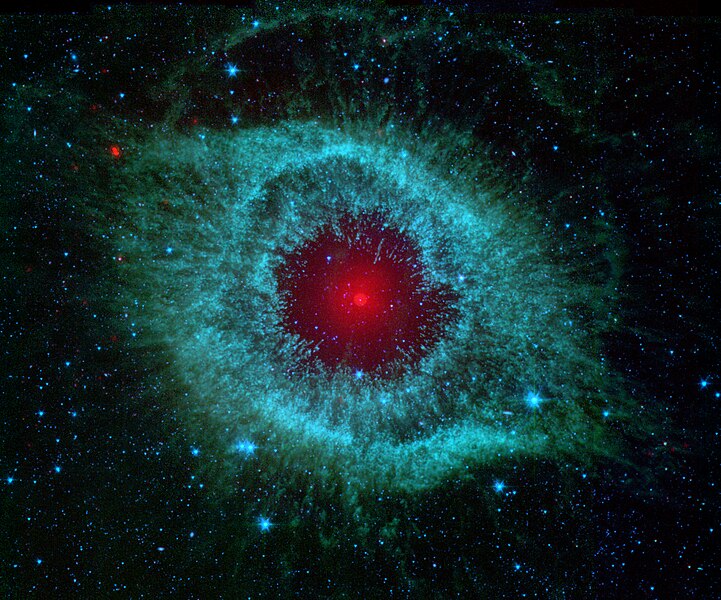فيشي:Comets Kick up Dust in Helix Nebula (PIA09178).jpg

حجم هاد المعاينة: 721 × 600 بكسل. أبعاد أخرى: 289 × 240 بكسل | 577 × 480 بكسل | 923 × 768 بكسل | 1,231 × 1,024 بكسل | 2,462 × 2,048 بكسل | 4,279 × 3,559 بكسل
لفيشي لأصلي (4,279 × 3,559 پيكسيل، تيساع لفيشي: 7.22 ميجابايت، نوع لميديا: image/jpeg)
ليسطوريك د لفيشي
ورك على تاريخ/ساعة باش تشوف هاد لفيشي كيف كان كايبان ف داك لوقت
| نهار/توقيت | تصغير | الأبعاد | خدايمي | تعليق | |
|---|---|---|---|---|---|
| ديال دابا | 04:43، 13 فبراير 2007 |  | 4,279 × 3,559 (7.22 ميجابايت) | Startaq | {{Information |Description=This infrared image from NASA's Spitzer Space Telescope shows the Helix nebula, a cosmic starlet often photographed by amateur astronomers for its vivid colors and eerie resemblance to a giant eye. The nebula, located about 700 |
تخدام لفيشي
ما كاينة حتا شي صفحة كاتخدّم هاد لفيشي
التخدام لعالمي د لفيشي
لويكيات التالية كاتخدّم هاد لفيشي:
- التخدام ف af.wikipedia.org
- التخدام ف ar.wikipedia.org
- التخدام ف arz.wikipedia.org
- التخدام ف ast.wikipedia.org
- التخدام ف ba.wikipedia.org
- التخدام ف bg.wikipedia.org
- التخدام ف bjn.wikipedia.org
- التخدام ف bn.wikipedia.org
- التخدام ف br.wikipedia.org
- التخدام ف ca.wikipedia.org
- التخدام ف cs.wikipedia.org
- التخدام ف de.wikipedia.org
- التخدام ف dsb.wikipedia.org
- التخدام ف en.wikipedia.org
- Helix Nebula
- Spitzer Space Telescope
- Comet nucleus
- Talk:Helix Nebula
- User:Swirlex/Userboxes
- User:Swirlex/Userboxcode
- NASA
- Wikipedia:Featured pictures/Space/Looking out
- User:Nonexyst
- User:Benjamin112
- Portal:Outer space/Selected picture
- User:Sunfishtommy/sandbox
- Wikipedia:Featured pictures thumbs/44
- Wikipedia:Featured picture candidates/October-2014
- User talk:Benison/Archive 19
- Wikipedia:Featured picture candidates/The God's Eye
- Wikipedia:Picture of the day/October 2016
- Template:POTD/2016-10-12
- Wikipedia:Main Page history/2016 October 12
- User talk:69.50.70.9
- User:The NMI User
- User:Corinne/subpage
- User talk:Benison/Archive 37
- Wikipedia:Userboxes/Science/Astronomy
- User:Catfurball
- User:Huggums537
شوف تّخدام لأعم ديال هاد لفيشي.



